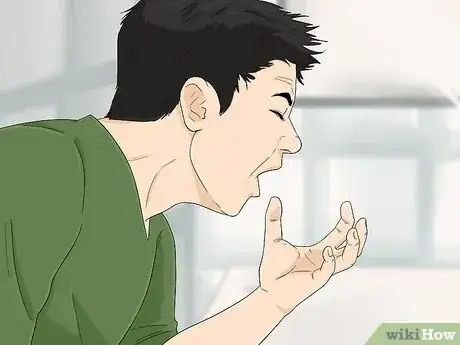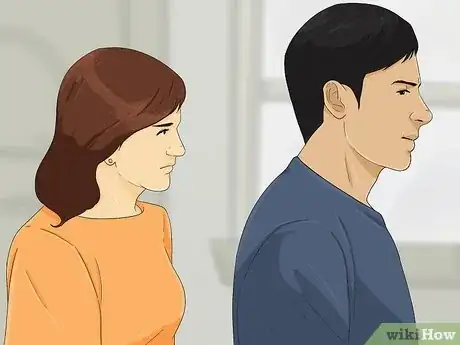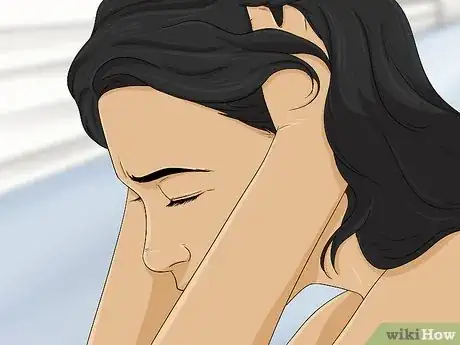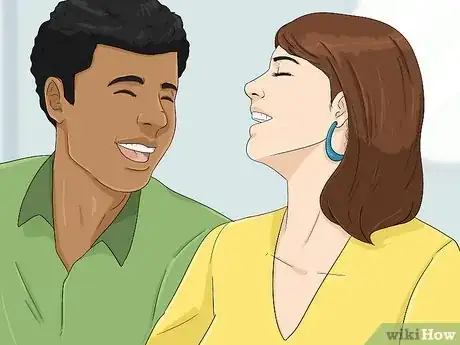This article was written by Liana Georgoulis, PsyD and by wikiHow staff writer, Madeleine Flamiano. Dr. Liana Georgoulis is a Licensed Clinical Psychologist with over 10 years of experience, and is now the Clinical Director at Coast Psychological Services in Los Angeles, California. She received her Doctor of Psychology from Pepperdine University in 2009. Her practice provides cognitive behavioral therapy and other evidence-based therapies for adolescents, adults, and couples.
There are 13 references cited in this article, which can be found at the bottom of the page.
This article has been viewed 22,953 times.
When an avoidant partner pulls away, it's natural to miss them. Fortunately, there are many ways for you to cope with an avoidant partner's behavior and heal your heart. In this article, we'll share expert-backed information about why you're drawn to an avoidant partner and why they have a tendency to run away. We'll also provide tips about how to move on and focus on your own self-growth. Read on to get over an avoidant partner and prioritize yourself.
This article is based on an interview with our licensed clinical psychologist, Liana Georgoulis, Psy.D. Check out the full interview here.
Steps
Recognize the attachment styles you both have.
-
If you have an avoidant partner, you probably have an “anxious” style.[1] X Research source Do you feel that your partner avoids intimacy and demands space? Do you also notice that they dodge questions or outright refuse to discuss their feelings? If so, they probably have an “avoidant” attachment style. If you feel overwhelmed when your partner pushes you away and responsible when they leave you, then it’s likely you have an “anxious” attachment style.[2] X Research source
- A partner with an avoidant attachment style also:
• Rejects people when they get too close.
• Finds it difficult to trust others.
• Fears anyone getting too close.
• Wants a lot of alone time.
• Believes that they don’t need anyone. - If you have an anxious attachment style, you may:
• Want to hold onto others so they don’t leave.
• Feel sensitive about criticism.
• Think you need approval from other people.
• Struggle with feelings of jealousy.
• Have difficulty being alone.
• Fear rejection and abandonment.
- A partner with an avoidant attachment style also:
Pay attention to how your body feels.
-
Check in with how the relationship impacts your health. You may be in “panic mode”—an anxious and confused state—when your avoidant partner is gone. Right now, go to a quiet place, take some deep breaths, and close your eyes. Focus on the sensations inside your body. For example, do you feel tightness in your jaw or tenseness in your shoulders? Once you’ve identified these physical cues, connect an emotion to them. Finally, list what you need to feel balanced again. Check out this sample process:[3] X Research source
- “I feel a pain in my chest and shortness of breath right now.”
- “This happens every time I look down at the ‘read’ receipt. I feel sad he hasn’t replied.”
- “I need to spend time with my friends so I can feel wanted and valued.”
Resist taking the blame for your partner’s behavior.
-
If they said you caused them to leave, recognize leaving was their choice. Since avoidant partners have a habit of finding fault in their significant others, block out any of their accusations. Maybe your partner claims you’re “needy” or they suggest you just don’t meet all their high standards.[4] X Research source If they say you’re the source of all conflict or tension, refuse to take it personally. Your avoidant partner needs to engage in self-reflection and acknowledge that they have a pattern of pushing people away.[5] X Research source
- When an avoidant partner criticizes you, they’re impulsively lashing out.
- Their abusive behavior and tendency to minimize you still isn’t okay.
- If they talk about what’s “wrong” with you, they’re actually feeling insecure about themselves.
- Unless they cope with their fears, they’ll run away from anyone they’re with.
- You aren’t at fault for their desire for distance or their resistance to communication.
Stop seeing your partner for their “potential.”
-
Recognize who they are now instead of who they could be. Resist idealizing your avoidant partner and holding out for who they can become. If they’re currently someone who ignores your feelings and doesn’t support you, acknowledge their impact on your life. Make a list of habits they have and the consequences of their actions. Here’s an example of that process:[6] X Research source
- “I thought they’d be caring one day, but the fact is, they’re really cold and callous.”
- “They’re never available. When I ask to talk, they tell me to handle everything on my own.”
- “Right now, they’re not showing me the love I need. They drift away from me almost every week.”
Take time to grieve what you’ve lost.
-
Let yourself fully experience your feelings so you can let go. If you’ve come to terms with the fact that your avoidant partner isn’t healthy for you, remember that it’s still normal to feel sad. Allow all your emotions to run their course instead of avoiding or escaping them. Cry, eat comfort food, and lean on your friends. When you go through a withdrawal from an emotional dependence on your avoidant partner, your craving for their companionship will eventually fade.[7] X Research source
- If you’ve broken up, resist reaching out to an avoidant person—that way, you won’t continue a cycle of emotional dependency.
- Practicing mindfulness meditation every day for 15-20 minutes can help you get over emotional dependency or obsessive thinking.
- Mourning a relationship is uncomfortable, but you’ll heal and feel lighter once you go through your full process of grief.
- You’ll be wiser and stronger after you go through all the stages of grief.
Accept that the relationship doesn’t have to work.
-
Even if you let go, you still have a bright future ahead of you. Instead of fixating on what you could have done differently, embrace change. If you decide that you and your avoidant partner aren’t a match because they can’t be emotionally available, then celebrate freedom from a dysfunctional dynamic. Realize that you didn’t lose out on love—you made room for a new relationship based on trust, respect, and support. Try motivating yourself with words like:[8] X Research source
- “If this relationship didn’t end, I wouldn’t have a chance to reflect on my own needs.”
- “Now that we’re not in touch, I can focus on my art and my social life.”
- “We both just made a choice to part ways. There’s a better future in store for me.”
Acknowledge the patterns you have in relationships.
-
Ask yourself if you have a habit of chasing after partners. Is your avoidant partner’s behavior unusual to you, or have you seen it before? When you express your devotion and excitement, do your partners get restless? Do they “ghost” you or break things off? Are you usually the person who puts the most effort into a relationship? Maybe you’re the only one who opens up about your emotions or expectations. If so, you might be caught up in the “anxious-avoidant” dance.[9] X Research source
- The “anxious avoidant” dance is also known as the “anxious-avoidant trap.”
- The term describes a toxic relationship where an anxious partner and an avoidant partner fight because they have different needs.
- As an anxious partner, you feel drained because you want more validation.
- You’re more likely to fight for your avoidant partner’s attention.
- Your avoidant partner may be concerned that you’re trying to control them.
- They might withdraw and ignore you so they’ll feel a sense of power again.
Describe a dynamic that’s healthy for you.
-
Identify what you want and need so you know what to seek out. After you’ve processed your breakup with an avoidant partner and identified “red flags”—or warning signs—focus on the “green flags” that prove a relationship is nourishing and rewarding. Make a list of your top priorities and your expectations once you let someone in your heart again. Here’s a sample for inspiration:[14] X Research source nm.org/healthbeat/healthy-tips/5-benefits-of-healthy-relationships
- “I need my future partner to trust me and accept my love.”
- “We both will need to focus on our own identities and passions.”
- “We’ll need to listen to one another and try our best to understand each other.”
Focus on your own self-worth.
-
You’ll see that your value doesn’t depend on pleasing others. If you have an anxious attachment style, it’s likely that you have traits of codependency. You may suffer from low self-esteem and self-worth. Right now, prioritize loving yourself. Ignore any negative messages you heard in your relationship. Instead, pay attention to your skills, talents, gifts, and values. Once you celebrate yourself, it’ll be easier to get over an avoidant partner.[11] X Research source
- Try out affirmations, or positive self-talk like: “I am extremely empathetic and compassionate.”
- Set boundaries to honor yourself like: “I won’t allow myself to be devalued or disrespected.”
- Talk about your principles with words like: “I believe in kindness and patience.”
- Be clear about your priorities with a comment like: “My time is precious. Right now, I’m focused on my own growth.”
Focus on hobbies and friends instead of the relationship.
-
Train yourself not to see your partner as “everything” in your life. Avoid “codependency,” a type of relationship addiction that involves thinking only about your avoidant partner and what they need. Redirect your attention to yourself. Develop interests and set goals that speak to you. Here are other strategies to strengthen your relationship with yourself:[12] X Trustworthy Source HelpGuide Nonprofit organization dedicated to providing free, evidence-based mental health and wellness resources. Go to source
- Replace activities you picked up to bond with your partner. For example, if you don't like tennis but salsa interests you, sign up for dance classes.
- List out goals that only have to do with your own aspirations and future success. For instance, you might want to become the best salesperson in your region.
- Hang out with people who aren’t mutual friends with your avoidant partner.
- When you’re with your support group, talk about topics other than your love life.
Commit to self-care rather than to “fixing” your partner.
-
Break the cycle of giving an avoidant person all your energy. Release yourself from the role of a “people pleaser”—someone who chooses to prioritize others over themselves—and pour all your energy into yourself. To regulate your moods, exercise, eat well, and get good sleep. Also journal about your feelings, seek out support, and practice self-acceptance. Make your own healing journey your new project. You’ll experience the joy of personal freedom.[13] X Research source
- Consider speaking to a counselor so you can talk about an anxious attachment style.
- As you gain more confidence in yourself, you’ll develop a “secure” attachment style.You’ll recognize that you’re an amazing partner.
- You’ll also build connections with people who truly appreciate you.
- Remember that when you’re happy and healthy, you’ll seek out partners who honor and respect you.
You Might Also Like
 11 Subtle Signs Your Girlfriend Slept with Someone Else
11 Subtle Signs Your Girlfriend Slept with Someone Else
 How to Find Out If a Guy is Playing You: 21 Signs He’s a Player
How to Find Out If a Guy is Playing You: 21 Signs He’s a Player







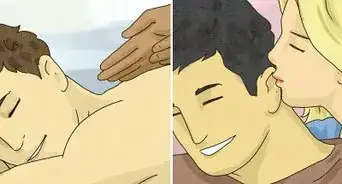 Why Your Boyfriend Isn’t Interested in Sex & What to Do About It
Why Your Boyfriend Isn’t Interested in Sex & What to Do About It
 12 Things to Do When Your Boyfriend Is Mad at You
12 Things to Do When Your Boyfriend Is Mad at You
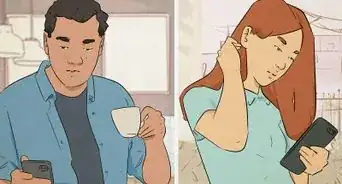
 Do You Really Love Someone if You Cheat on Them? Why We Cheat on People We Love
Do You Really Love Someone if You Cheat on Them? Why We Cheat on People We Love
 How to Make a Narcissist Come Crawling Back
How to Make a Narcissist Come Crawling Back
References
- ↑ https://www.psychologytoday.com/us/blog/the-freedom-change/201906/the-field-play-anxious-and-avoidant-attachment-dates
- ↑ https://psychcentral.com/health/4-attachment-styles-in-relationships#anxious-attachment
- ↑ https://www.joinonelove.org/learn/yes-trust-gut-heres/
- ↑ https://psychcentral.com/blog/love-matters/2018/07/16-signs-of-an-avoidant-or-unavailable-partner#6
- ↑ https://psychcentral.com/blog/love-matters/2018/07/18-ways-to-increase-intimacy-and-communication-with-an-avoidant-partner#1
- ↑ https://alternativeshrink.com/2019/03/01/falling-in-love-with-potential/
- ↑ https://www.psychologytoday.com/us/blog/me-we/201306/how-mourn-breakup-move-past-grief-and-withdrawal
- ↑ https://www.psychologytoday.com/us/blog/the-freedom-change/202012/getting-over-breakup-attachment-style
- ↑ https://www.goodtherapy.org/blog/ending-anxious-avoidant-dance-part-1-opposing-attachment-styles-0518174
- ↑ nm.org/healthbeat/healthy-tips/5-benefits-of-healthy-relationships
- ↑ https://www.psychologytoday.com/us/blog/addiction-and-recovery/201908/boundaries-and-the-dance-the-codependent
- ↑ https://www.helpguide.org/articles/relationships-communication/codependency.htm
- ↑ https://www.psychologytoday.com/us/blog/your-emotional-meter/201803/how-i-learned-stop-being-people-pleaser
About This Article



